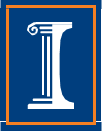Project TACTIC: Teaching All Computational Thinking through Inclusion and Collaboration
TACTICal Teaching Brief
Introduction
The importance of paraeducators in public schools cannot be overstated. Paraeducators are often asked to juggle many tasks with multiple students with disabilities, and they regularly find themselves at the center of a whirlwind of activities. Paraeducators are often required to support instruction, such as computer science (CS), with minimal professional development or time to learn how to support students with disabilities in this new content area.
Scenario
Ms. Robbins is a paraeducator assigned to a classroom where three students with disabilities are included in the computing/programming class alongside their peers:
- Rachel has a learning disability related to math,
- Roberto has a social communication disorder that has kept him from verbally expressing his needs, and
- Connie has an emotional behavior disorder as well as a speech/language impairment and often does not interact with her peers.
Ms. Robbins noticed that each student had different challenges.
- Rachel is taken out of the CS class halfway through instruction to receive her math intervention services, so she does not get to work on her project.
- Connie sits in his assigned seat, which is away from many of his peers, and does not interact with others as compared to the other students in the class, who try to problem solve together.
- Roberto does a good job listening to the teacher explain the project, but then immediately gets frustrated as soon as she gets stuck and stops working.
Despite these challenges, Ms. Robbins also noticed that the students did experience success: All three of students maintained attention, shared that they were proud of their accomplishments when they overcame a and seemed like they were having fun and actively engaged for the majority of the CS instructional time. Ms. Robbins knew, however, that to capitalize on these successes, all three students needed a little more support.
Common Challenges
- Some students with disabilities left class during CS instruction to get their reading or math intervention services.
- When teaching content that requires a high degree of abstract thinking, some students with disabilities will quickly become frustrated and shut down if they:
- don’t have sufficient prior knowledge;
- are not taught problem-solving strategies to help them persist when they are stuck; or
- have not had opportunities to think creatively in situations where there may be multiple solutions, especially when they feel rushed to complete their work.
- Some students with disabilities have a hard time interacting with or working with their peers during computer science education.
Strategies for Paraeducators
- Collaborate with the general educator/CS teacher before the lesson
- Prebrief not debrief. If possible, you should know the outcome for the CS lesson before working with your students.
- Preview any lesson plans or student planning sheets before instruction begins.
- Ask about key ideas for the lesson and become familiar with any tools or platforms that are to be utilized.
- Understand what it is that students should be able to do at the end of instruction.
- Communicate with the general education/CS teacher, special education and/or technology teacher. This can occur informally through email or text.
- Don’t feel afraid to share your ideas with the teachers and ask questions. Remember you are an important part of the team, not a guest in the classroom.
- Prebrief not debrief. If possible, you should know the outcome for the CS lesson before working with your students.
- Encourage the student to talk with peers (Israel et al., 2015; Park & Lash, 2014)
- Be the coach, not the player.
- For some students, it is not enough to tell them to talk to a peer. Instead, demonstrate/model how to ask for help and how to listen to the response. As the student becomes more successful in collaborating with peers, provide less support to encourage independence.
- Provide explicit guidance in how to collaborate.
- Use the Collaborative Discussion Framework (Park & Lash, 2014) to guide the student in asking certain questions to get them back on track.
- The CDF with helper language may be found https://goo.gl/JzusYW
- Use the Collaborative Discussion Framework (Park & Lash, 2014) to guide the student in asking certain questions to get them back on track.
- Be the coach, not the player.
- We can’t do the learning for them
- Although we dislike seeing our students struggle, sometimes great learning happens through productive struggle.
- Provide assistance only when absolutely necessary. As much as we want to protect and help our students, intervening too quickly may limit the student’s ability to think.
- Communicate that you will help through struggle.
- It is important that students do not struggle to the point of giving up. That could lead to dislike for computing. If a student becomes overly frustrated, then definitely help reduce her/his frustration. This could mean having the student take a break, work on another related or unrelated task or, talk through the problem.
- Patience, patience, patience.
- It is more important that students acquire the targeted computing skills than the grades for an assignment.
- Use a “least to most prompting” strategy.
- Start with the least amount of support you think the student will need and move towards more and more support so that you don’t over-support.
- Although we dislike seeing our students struggle, sometimes great learning happens through productive struggle.
Least to Most Prompting
- Least
- Clarify directions
- Encourage peer collaboration
- More
- Using strategic questioning (open and close ended questions)
- Verbal prompting of steps, strategies, etc.
- Most
- Model for the student using your own computer rather than the student’s device
- Physical prompting: Hand over hand
Summary
Ms. Robbins is starting to feel like she is learning the CS curriculum and beginning to understand how to support Rachel, Connie, and Roberto more effectively.
She also spoke with the special education teacher about the benefits of including Rachel throughout the entire CS lesson, but this scheduling issue was not fully resolved.
With that said, Ms. Robbins is beginning to notice that with modeling and encouraging collaboration, these three students are experiencing more success during CS instruction and that they are more fully invested in the class activities.
References
Israel, M., Wherfel, Q., Pearson, J., Shehab, S., & Tapia, T. (2015). Empowering K-12 students with disabilities to learn computational thinking and computer programming. TEACHING Exceptional Children, 48(1), 45-53.
Park, M., & Lash, T. (2014). The Collaborative Discussion Framework. Champaign Unit 4 School District.
Recommended Citation:
Lash, T., Wherfel, Q., Jeong, G., & Israel, M. (2017). Helpful strategies for paraeducators during K-12 computer science instruction. Project TACTIC: Teaching All Computational Thinking through Inclusion and Collaboration. Retrieved from University of Illinois, Creative Technology Research Lab website: https://CTRL.education.illinois.edu/TACTICal/paraeducator
Note: There are no copyright restrictions on this document; However, please use the proper citation.

 Funding for this research
was provided by the National Science Foundation (award #1639837). Any opinions, findings, conclusions, or
recommendations expressed in this material are those of the authors and do not necessarily reflect those of the
NSF.
Funding for this research
was provided by the National Science Foundation (award #1639837). Any opinions, findings, conclusions, or
recommendations expressed in this material are those of the authors and do not necessarily reflect those of the
NSF.
For More Information, please contact: Maya Israel (misrael@coe.ufl.edu).
